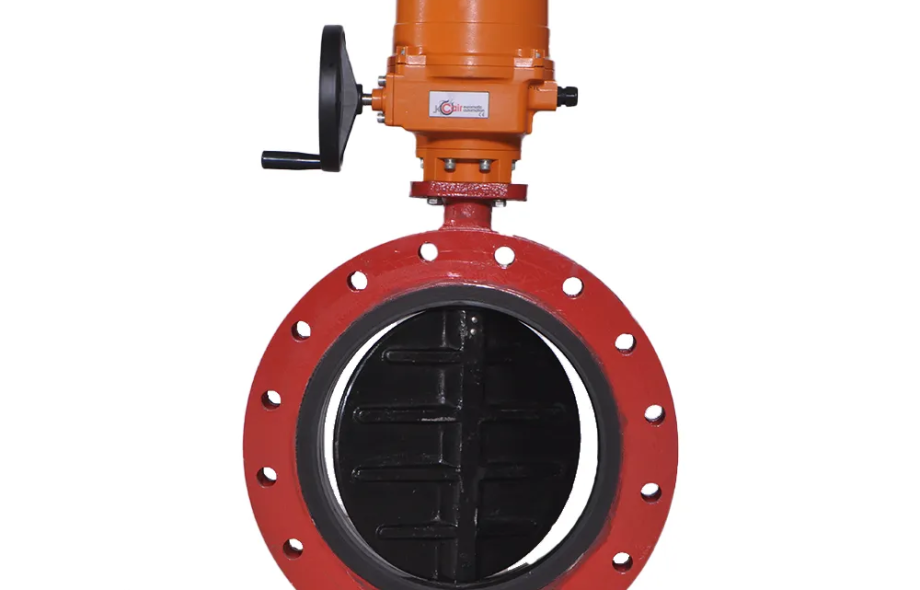When it comes to managing fluid flow in industrial processes, motorized butterfly valves with actuators play a crucial role.
These devices provide efficient and precise control over flow rates and pressure, making them essential in various sectors, including water treatment, HVAC systems, and chemical processing.
Selecting the right motorized butterfly valve with actuator is vital for ensuring optimal performance, safety, and long-term reliability. In this guide, we will explore the factors you should consider to make an informed choice, specifically tailored for industries in Ahmedabad.
Understanding the Basics of Motorized Butterfly Valves with Actuators
When paired with an actuator, the valve can be controlled remotely, making it highly suitable for automated systems. The actuator, typically electric, pneumatic, or hydraulic, drives the rotation of the valve’s disc, allowing precise adjustments to flow and pressure.
The main advantages of using motorized butterfly valves with actuators include:
• Precise Control: They offer fine control over flow rates and pressures.
• Space Efficiency: Their compact design saves space compared to other valve types.
• Cost-Effective: Motorized butterfly valves are often more affordable and require less maintenance than other valves.
Key Factors to Consider When Selecting a Motorized Butterfly Valve with Actuator
Valve Size and Pressure Rating The size of the valve and its pressure rating must align with the specifications of your system. High-pressure systems will need valves designed to handle these conditions without compromising performance.
For example, stainless steel is ideal for applications involving corrosive chemicals, while PVC is suitable for low-pressure and low-temperature systems. Choosing the right material ensures the valve’s longevity and minimizes wear and tear.
Type of Actuator The actuator is the driving force behind the operation of a motorized butterfly valve.
There are three main types of actuators:
Electric Actuators: These are the most common and offer precise control, making them ideal for automated systems.
• Pneumatic Actuators: These are typically used in applications requiring rapid opening and closing cycles.
• Hydraulic Actuators: These are used in high-pressure systems but are generally more expensive.
When choosing the right actuator, consider factors such as the operating environment, control requirements, and system power supply.
Control Type Understanding the control system of the actuator is essential for integrating the valve into your automation system.
There are two main types of controls:
• On/Off Control: This type of control is simple and used when you only need to open or close the valve.
• Modulating Control: This control type is ideal when precise adjustments are needed. It allows for partial opening or closing, making it suitable for flow regulation.
Environmental Conditions The operating environment plays a significant role in selecting the right motorized butterfly valve with actuator. Similarly, valves used in outdoor or corrosive environments may require additional protection against the elements.
Maintenance and Longevity Regular maintenance is crucial for ensuring the longevity of your valve and actuator.
While motorized butterfly valves are generally low-maintenance, it’s still important to select one designed for ease of serviceability.
Look for models that allow easy access to components such as the actuator, seals, and bearings, which may need periodic inspection or replacement.
Benefits of Using Motorized Butterfly Valves with Actuators in Ahmedabad
In Ahmedabad, industries such as chemical processing, water treatment, and HVAC systems are rapidly adopting automation technologies to enhance efficiency and reduce operational costs. Motorized butterfly valves with actuators are ideal for these applications due to their:
• Energy Efficiency: These valves allow for better control of flow, reducing energy consumption.
• Reliability: With proper selection and maintenance, motorized butterfly valves offer consistent and reliable performance over long periods.
• Automation Integration: They can be seamlessly integrated into automated control systems, providing remote monitoring and control.
Conclusion
Selecting the right motorized butterfly valve with actuator is essential for ensuring the smooth operation and efficiency of your systems.
Factors such as valve size, material compatibility, actuator type, and environmental conditions must be carefully considered to make the best choice.
By investing in high-quality motorized butterfly valves, you can improve process control, reduce maintenance costs, and enhance system reliability.
If you are looking for top-quality motorized butterfly valves with actuators for your industrial applications, Cair Euromatic is a trusted name in Ahmedabad, offering solutions that meet the highest industry standards.
Contact us today to learn more about how we can help optimize your systems with our advanced valve technologies.



 :
:









